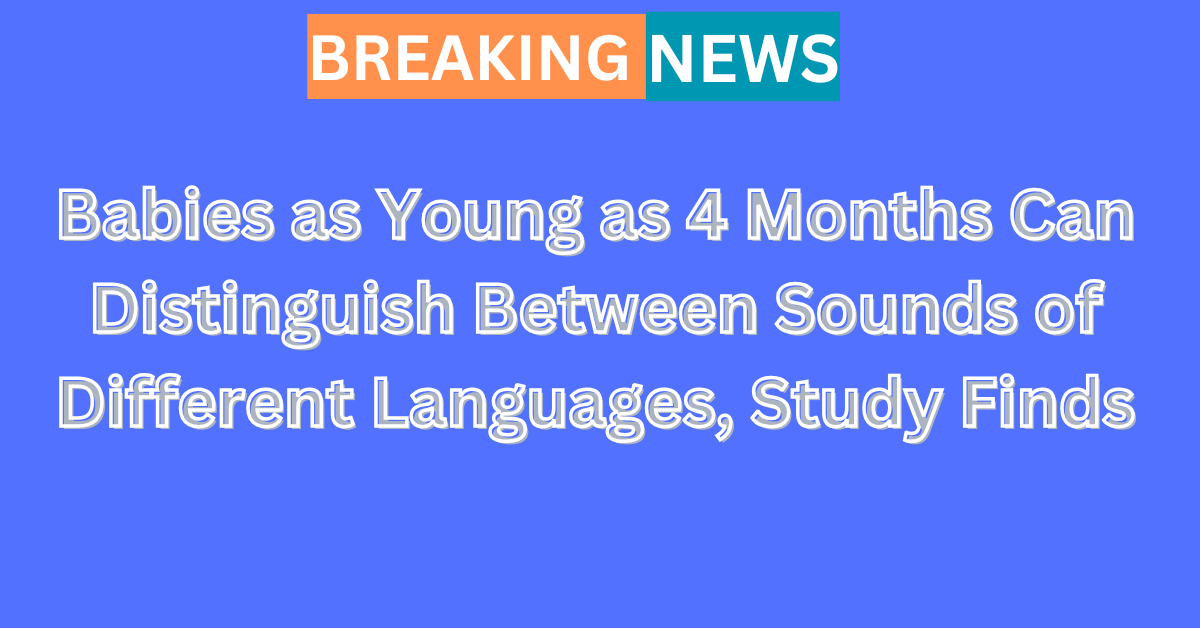Babies as Young as 4 Months: A fascinating new study has revealed that babies as young as four months old possess the remarkable ability to differentiate between the sounds of different languages. This discovery sheds light on the early stages of language development and highlights how infants begin to process and understand the complexities of human speech long before they start talking.
Key Findings of the Study
Researchers conducted experiments with infants to understand how they perceive and respond to the sounds of various languages. The study found that:
- Babies Recognize Language Patterns: By four months, babies can distinguish between the rhythmic and phonetic patterns of different languages. For example, they can tell the difference between languages like English and Japanese, which have distinct sound structures.
- Visual Cues Play a Role: The study also discovered that babies rely not only on auditory cues but also on visual cues, such as lip movements, to differentiate between languages. This suggests that infants use a combination of senses to process language from a very early age.
- Early Language Exposure Matters: Babies exposed to multiple languages from birth showed a stronger ability to distinguish between languages compared to those raised in monolingual environments. This highlights the importance of early exposure to diverse linguistic sounds.
How the Study Was Conducted
The researchers used a technique called “visual habituation” to observe how babies react to different languages. Infants were shown videos of people speaking in two different languages while their eye movements were tracked. The results showed that babies spent more time looking at the screen when the language changed, indicating their ability to recognize the difference.
Why This Discovery Matters
This study provides valuable insights into the early stages of language acquisition and cognitive development in infants. Understanding how babies process language can help parents, educators, and researchers create better strategies for early childhood education, especially for bilingual or multilingual families.
Additionally, the findings emphasize the importance of talking to babies and exposing them to a variety of sounds and languages from an early age. Such exposure can enhance their language skills and cognitive abilities as they grow.
Practical Tips for Parents
Here are some ways parents can support their baby’s language development based on the study’s findings:
- Talk to Your Baby Often: Engage in conversations with your baby, even if they can’t respond yet. This helps them become familiar with the sounds and rhythms of language.
- Introduce Multiple Languages: If possible, expose your baby to more than one language. This can be through speaking, singing, or playing audio in different languages.
- Use Visual Cues: Make eye contact and use expressive facial movements while talking to your baby. This helps them connect sounds with visual information.
- Read Aloud: Reading books to your baby introduces them to new words and sentence structures, further boosting their language skills.
Conclusion
The study’s findings underscore the incredible capabilities of infants when it comes to language processing. Babies as young as four months old are not just passive listeners but active participants in understanding the world of language around them. By nurturing this ability through early exposure and interaction, parents can lay a strong foundation for their child’s linguistic and cognitive development.
This research opens up new avenues for exploring how babies learn and adapt to the complexities of human communication, offering exciting possibilities for future studies in early childhood development.
